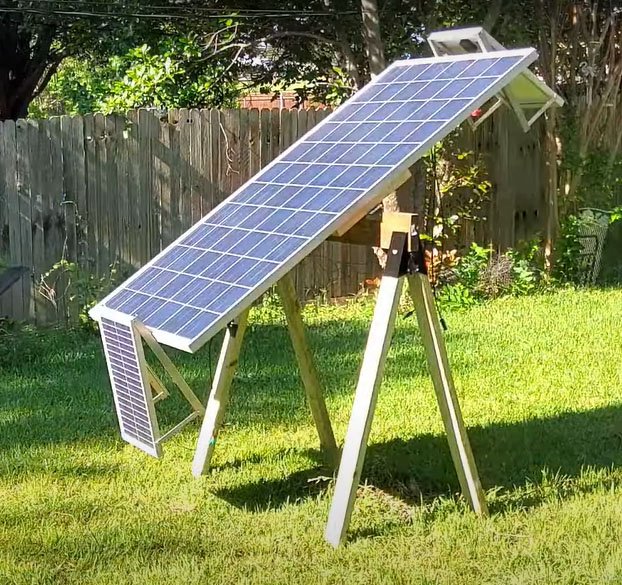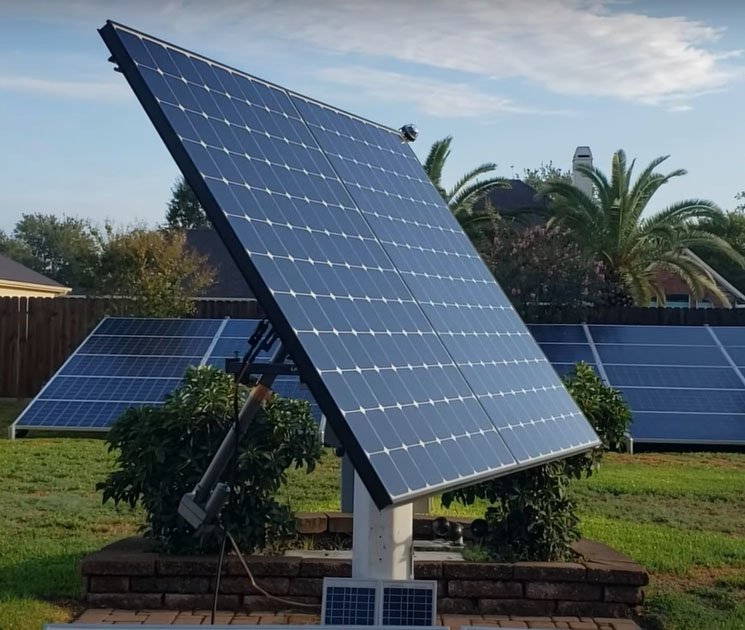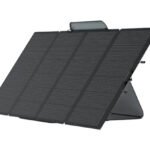Are solar trackers worth it? In this article, we’ll explore the ins and outs of solar trackers, from their functionality to the different types available, and ultimately answer the question: Are solar trackers worth the investment?

What is a solar tracker and how does it work?
A solar tracker is a device that follows the sun’s path across the sky, maximizing solar panel efficiency by ensuring they are always facing the sun. By doing so, they significantly enhance energy output compared to stationary solar panels. The basic idea is simple: if solar panels are perpendicular to the sun’s rays, they receive the maximum amount of sunlight, thus generating more electricity.


How Solar Trackers Work:
- Light Sensors: Solar trackers use light sensors or photodetectors to determine the position of the sun in the sky.
- Controller: The sensors send signals to a controller, which calculates the optimal position for the solar panels based on the sun’s current position.
- Actuators or Motors: The controller then activates motors or actuators to adjust the position of the solar panels according to the calculated optimal angle.
- Tracking Algorithms: The controller often employs sophisticated tracking algorithms to predict the sun’s path and position, ensuring that the solar panels are always oriented for maximum sunlight exposure.
Solar trackers can significantly increase the overall energy yield of a solar power system compared to fixed-mount systems by continuously adjusting the orientation of solar panels to face the sun directly. This improved efficiency is particularly valuable in locations where sunlight conditions vary throughout the day and across seasons.
Types of Solar Trackers
They come in various types, each designed to optimize the orientation of solar panels based on different factors such as the time of day, season, and geographical location. So, they can be categorized into active, manual, and passive types based on how they operate and the level of automation involved:
Active Solar Trackers:
Active solar trackers use electronic control systems, sensors (such as light sensors or GPS), and motors or actuators to reposition the solar panels in real-time. These systems require a power source to operate. We can find two types:
Single-Axis Active Trackers:
These trackers use motors, actuators, and control systems to automatically adjust the position of solar panels. They actively follow the sun’s movement throughout the day to optimize the angle of incidence.
Dual-Axis Active Trackers:
They are similar to single-axis active trackers but operate on horizontal and vertical axes. They continuously adjust both azimuth and altitude angles to maximize solar exposure.
Advantages and Disadvantages of Active Solar Trackers
Pros
Cons
Manual Solar Trackers
- User-Operated: Manual solar trackers involve human intervention to adjust the orientation of solar panels. Users manually reposition the panels based on their observations or calculations.
- Seasonal Adjustment: Some manual trackers are designed for seasonal adjustments, where the tilt or orientation of the panels is changed a few times a year to optimize energy capture during different seasons.
- Cost and Simplicity: Manual solar trackers are often simpler and less expensive than active trackers. However, they may not be as precise or efficient in tracking the sun.
Advantages and Disadvantages of Manual Solar Trackers
Pros
Cons
Passive Solar Trackers
- Gravity-Based Trackers: Passive solar trackers use gravity or other natural forces to adjust the position of solar panels. For example, a tracker may rely on a counterweight that moves with the changing position of the sun, causing the solar panels to tilt accordingly.
- Thermal Expansion: Some passive trackers use materials with different rates of thermal expansion to change the orientation of the panels as they heat up or cool down.
- No External Power: Passive solar trackers do not require external power sources or complex control systems. They are more reliant on the inherent characteristics of the materials used in their construction.
Advantages and Disadvantages of Passive Solar Trackers
Pros
Cons
Conclusion
The choice between active, manual, and passive solar trackers depends on factors such as budget, desired efficiency, maintenance capabilities, and the specific requirements of the solar power installation. Active trackers are generally more efficient but come with higher costs and maintenance needs, while manual and passive trackers may be suitable for simpler applications or locations where power sources are limited.
In many cases, the selection is based on finding a balance between cost, complexity, and overall energy capture efficiency.


Single Axis Solar Tracker vs Double Axis Solar Tracker, which is the best?
The choice between a single-axis solar tracker and a dual-axis solar tracker depends on various factors, including the specific requirements of the solar power installation, budget constraints, and the desired level of energy efficiency. Here are some considerations for each type:
Single-Axis Solar Tracker
Pros
Cons
Dual-Axis Solar Tracker:
Pros
Cons
Which Is Best?
The choice between a single-axis and dual-axis solar tracker depends on the specific goals, budget, and conditions of the solar power project. Here are some general guidelines:
- Budget Constraints: If cost is a significant consideration, a single-axis tracker may be a more economical choice.
- Space Availability: A single-axis tracker might be more practical when space is limited because of its smaller footprint.
- High Efficiency Requirement: If maximizing energy yield is a top priority, and budget allows, a dual-axis tracker is the preferred choice, especially in locations with significant seasonal variation in sun angles.
In summary, the “best” choice depends on the specific needs and constraints of the solar power project. Both single-axis and dual-axis trackers have advantages, and the decision should be based on a careful evaluation of the project’s goals and limitations.

Pros and cons of solar trackers
Pros
Cons
Advantages explained
- Increased Energy Output: Solar trackers maximize energy capture by orienting solar panels to face the sun directly. This leads to increased energy production compared to fixed-mount systems, especially in locations with varying sun angles.
- Enhanced Efficiency: They optimize the angle of incidence, ensuring that solar panels receive sunlight more directly throughout the day. This can significantly improve overall system efficiency.
- Adaptability to the Sun’s Path: Solar trackers can adapt to the sun’s changing position in the sky, capturing sunlight from sunrise to sunset. This is particularly valuable in regions with high solar incidence variability.
- Improved Performance in Diffuse Light: They can enhance energy capture in diffuse light conditions when the sun is not directly overhead, providing better performance on cloudy days.
- Seasonal Adjustability: Some trackers can be adjusted seasonally to account for the sun’s changing position during different times of the year, optimizing energy production.
Disadvantages Explained
Higher Initial Cost: Solar trackers, especially dual-axis trackers, tend to be more expensive to install than fixed-mount systems. The initial cost can be a significant factor for budget-conscious projects.
Increased Maintenance Requirements: Trackers involve moving parts, sensors, and control systems, which can increase maintenance needs compared to fixed-mount systems. Wear and tear on mechanical components may require periodic inspections and repairs.
Space Requirements: Dual-axis trackers, in particular, may require more space due to their increased range of movement. This can limit their applicability in constrained or densely populated areas.
Energy Consumption: Active solar trackers require a continuous power source to operate, which can add to the overall energy consumption of the solar power system.
Complexity: Solar trackers, especially active trackers, have a more complex design and installation. This complexity can lead to potential issues and require skilled professionals for installation and maintenance.
Possibly Overkill for Some Applications: In certain situations, where the solar incidence is relatively consistent, the additional complexity and cost of them may not justify the relatively small increase in energy output.
Which is Best?
The decision to use solar trackers should be based on a thorough analysis of project requirements, available budget, and the specific solar conditions at the installation site. While solar trackers can significantly enhance energy capture, their benefits need to be weighed against the associated costs and complexities.
How much energy does a solar tracker produce?
The energy production of a solar tracker depends on various factors, including location, weather conditions, and the type of tracker. However, on average, they can generate 20-40% more energy compared to fixed solar panels.
Which is the best solar tracker?
Determining the “best” solar tracker depends on the specific requirements of a project, including factors such as the geographic location, available budget, space constraints, and the desired level of energy efficiency. Several reputable manufacturers produce different types of them, and the choice often involves a trade-off between cost, complexity, and performance.
Here are some well-known solar tracker manufacturers:
- NEXTracker: Nextracker is the leading provider of intelligent, integrated solar tracker and software solutions used in utility-scale and ground-mounted distributed generation solar projects around the world.
- Array Technologies: Array Technologies is a leading manufacturer of single-axis solar trackers. Their trackers are designed for durability, ease of installation, and high performance.
- Solar FlexRack: Solar FlexRack provides both fixed-tilt and single-axis solar trackers. Their solutions are known for being versatile and adaptable to various project needs.
- DEGER: DEGER is a global player in the solar tracking industry, offering single-axis and dual-axis trackers. They are recognized for their patented Maximum Light Detection (MLD) technology.
- SunLink: SunLink provides a range of solar tracking and fixed-tilt solutions. Their trackers are designed to optimize energy capture and are suitable for a variety of project sizes.
- Mechatron: Mechatron offers dual-axis solar trackers with a focus on high precision and reliability. Their trackers are designed for both utility-scale and distributed generation projects.
When selecting a solar tracker, it’s crucial to consider factors such as:
- Project Size: Some trackers are better suited for utility-scale projects, while others may be more appropriate for smaller installations.
- Terrain and Conditions: Consider the local topography, climate, and environmental conditions of the installation site.
- Budget: Different trackers come with varying costs, and the budget constraints of the project play a significant role in the decision-making process.
- Maintenance Requirements: Evaluate the maintenance needs of the tracker, as this can impact the overall cost of ownership.
Are solar trackers worth it?
Whether solar trackers are worth it depends on the specific circumstances of a solar power project. Here are some factors to consider when evaluating the cost-effectiveness of them:
- Location: The geographic location of the solar installation plays a crucial role. Solar trackers may offer more substantial benefits in areas with high solar variability or significant seasonal changes.
- Project Size: The scale of the project can impact the cost-effectiveness of solar trackers. They are often more cost-effective for utility-scale projects where the increased energy production justifies the higher upfront costs.
- Energy Prices: The current and projected future energy prices can influence the economic viability of a solar power project with trackers. Higher energy prices may lead to faster payback periods.
- Financial Incentives: Government incentives, tax credits, and other financial benefits for solar installations can affect the overall financial attractiveness of using solar trackers.
- Site-Specific Analysis: Conducting a site-specific analysis, including solar resource assessments and simulations, can provide insights into the expected performance and economic benefits of using solar trackers.
Conclusion
To sum up, solar trackers have emerged as a key player in the quest for efficient and sustainable energy. With their ability to optimize energy production, the choice to invest in solar trackers is not just a step forward; it’s a leap toward a greener and more sustainable future.




Leave a Reply